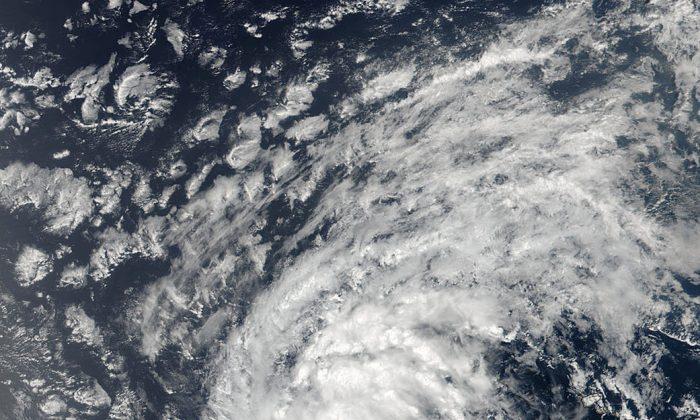Hurricane Irma strengthened into a powerful Category 5 hurricane and plowed toward the Caribbean and the southern United States on Tuesday as islands in its path braced for possible life-threatening winds, storm surges and flooding.
Florida Governor Rick Scott declared a state of emergency in all 67 Florida counties on Monday. On Tuesday, the U.S. National Hurricane Center said that Irma had become “an extremely dangerous hurricane.”
Irma could reach southern Florida on September 10, according to a global model developed by National Oceanic and Atmospheric Administration and mapped by Ventusky.com.
In its current state, Irma would be the biggest storm to hit Florida since Hurricane Andrew in 1992, according to Miami Herald.

“Hurricane Irma is a major life-threatening storm and Florida must be prepared,” Scott said in a statement.
Scott was briefed by the Florida division of the Federal Emergency Management Agency (FEMA) and the latest forecasts place Florida in Irma’s path.
Hurricane warnings and watches are in effect for parts of the Leeward Islands, the British and U.S. Virgin Islands and Puerto Rico, in preparation for a storm that was intensifying with 175 mph winds, the U.S. National Hurricane Center (NHC) said.
“Irma becomes an extremely dangerous category 5 hurricane,” the hurricane center said. “Preparations should be rushed to completion as tropical storm-force winds are expected to arrive in the hurricane warning area by late Tuesday.”
“The hurricane force winds in Irma are wider than Florida. You won’t need a direct hit to get Wilma-type winds & storm surge on both coasts,” tweeted Bryan Norcross, a hurricane specialist at the Weather Channel.
A Category 5 hurricane on the five-step Saffir-Simpson scale means sustained winds of more than 157 miles per hour and “catastrophic” outcomes. They range from uprooted trees and downed power lines to water and electricity outages and enough damage to leave property uninhabitable, according to the Miami-based hurricane center.
Gov. Scott encouraged Florida state residents to make a plan for their families and business by visiting FloridaDisaster.org.
“In Florida, we always prepare for the worst and hope for the best and while the exact path of Irma is not absolutely known at this time, we cannot afford to not be prepared,” Scott added.
In preparation for the storm, the government of economically struggling Puerto Rico has declared a state of emergency and activated the National Guard. The U.S. territory, home to about 3.4 million people, has 456 emergency shelters prepared to house up to 62,100 people.



Puerto Rico also froze prices on basic necessities, including food and water, medicines, power generators and batteries, to help residents prepare.
Telemundo TV station WIPR in Puerto Rico showed long lines of shoppers stocking up on bottled water, flashlights, batteries, generators, food and other items.


The executive director of the state power authority, Ricardo Ramos, told the station that the power grid was so vulnerable from lack of investment that parts of the U.S. territory could be without power for three to four months.
“We’re preparing for the worst-case scenario,” he said.
Irma also threatens the U.S. East Coast and Florida, which has declared a state of emergency. The hurricane center expects Irma to reach southern Florida on Saturday.
Florida Governor Rick Scott said on Twitter late on Monday he had spoken to U.S. President Donald Trump, who he said “offered the full resources of the federal government as Floridians prepare for Hurricane Irma.”
The NHC cautioned that it was too early to forecast the storm’s exact path or what effects it might have on the continental United States, but warned of likely effects to hit some areas by later this week.
“There is an increasing chance of seeing some impacts from Irma in the Florida Peninsula and the Florida Keys later this week and this weekend. In addition, rough surf and dangerous marine conditions will begin to affect the southeastern U.S. coast by later this week,” the center said.
Irma will be the second powerful hurricane to thrash the United States and its territories in as many weeks.
Residents of Texas and Louisiana are still reeling from the catastrophic effects of Hurricane Harvey, which struck Texas as a Category 4 hurricane on Aug. 25 and dumped several feet of rain, destroying thousands of homes and businesses.

Flood waters caused by Tropical Storm Harvey encompass the Motiva Enterprises LLC in Port Arthur, Texas Aug. 31, 2017. (REUTERS/Adrees Latif)


Reuters contributed to this report.






Friends Read Free